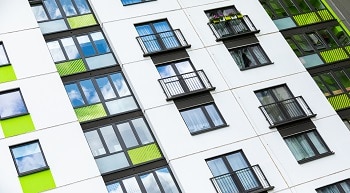In recent years, Ireland has witnessed a seismic shift in its private rented sector, with a notable decrease in the number of landlords. One of the primary drivers behind the diminishing numbers of landlords is that property ownership has become increasingly challenging. While rent control policies are well-intentioned, policy makers must avoid the unintended consequences.
While the RTB data shows that private non institutional landlords are the single largest landlord set in the market, a report from IPAV & IPOA shows private investor participation in the market dropping from 19.9 per cent of total mortgage lending in 2006 or €7.9 billion to 1.4 per cent in 2021 or €143 million. This trend has significant implications for the broader housing market.
One of the primary drivers behind the diminishing numbers of landlords in Ireland is that property ownership has become increasingly challenging due to rising costs of acquisition and maintenance, coupled with stagnant rental yields.
Following years of significant rental inflation, Irish Rent Pressure Zone (RPZ) legislation or rent control was introduced on 24 December 2016. The legislation was designed to limit landlords, in designated areas, from increasing rents by more than 4 per cent per annum. In 2021, the 4 per cent ceiling was changed to 2 percent or a maximum of 2 per cent if inflation was higher than that. Separately new housing stock not previously let and new tenancies in properties not let in the previous two years are exempt from these controls.
Rent control is a contentious topic anywhere a housing market faces challenges related to availability, affordability and increasing rental costs. So not just in Ireland.
While its supporters argue that rent control provides relief to renters, critics highlight several disadvantages associated with this type of intervention in the housing market.
Critics argue that rent control does not effectively address the root causes of housing affordability and disproportionately benefits certain groups. For example, although rent control has been shown to increase stability and affordability for tenants in controlled units, some studies show these benefits are offset by greater costs in the uncontrolled rental market because of reductions in the overall supply of rental units. This means that new renters entering the market have fewer units to choose from and face higher costs.
One of the main disadvantages with rent control is the restriction on a landlord’s ability to adjust rents in line with market dynamics and inflationary pressures. By capping rent increases, landlords find it challenging to cover rising operating costs, such as maintenance, insurance, and property taxes, thereby eroding rental yields and profitability. Additionally, mortgage interest increases make it untenable for many landlords to continue renting property, resulting in these properties being sold. As investors will not purchase where rent is restricted, the number of properties available to rent falls.
The decreasing number of landlords in Ireland’s private rented sector underscores the complexities inherent in balancing rent control policies with the need to maintain a sustainable rental market. Landlords that historically charged rents under market rate that are subject to minimal increases under RPZ regulation are exiting the market in greatest numbers. These landlords are being replaced in part by new properties at much higher rents owned by institutional landlords.
While institutional landlords bring certain efficiencies and economies of scale to the rental market, their rise should raise concerns about how these landlords wield considerable influence over rental prices and housing availability. The dominance of institutional landlords in the rental market stifles competition and exacerbates affordability challenges.
While rent control policies are well-intentioned and aim to address the affordability issue, policy makers must avoid the unintended consequences that exacerbate affordability, availability, disproportionately affect smaller landlords and undermine the rental market as a whole.









